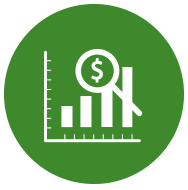Cost & Quality Problems
Chronic Conditions
While strong evidence demonstrates that chronic conditions account for a large share of health spending in the U.S., the prevalence of chronic conditions, while growing, accounts for just one quarter of overall growth in spending for patients with chronic conditions. Most of the spending increase for chronic conditions, however, is accounted for by the rising costs associated with treating chronic conditions.
Chronic Conditions are a Major Share of Health Spending
A chronic condition is a long-lasting condition that can be controlled but rarely cured, including conditions such as heart disease, cancer, diabetes, obesity and arthritis. Approximately one in two Americans live with at least one chronic condition. Of those, one fourth experience significant limitations in daily activities.
Chronic conditions account for an enormous share of American health care spending. Roughly 75 percent of total U.S. health care spending is used to treat patients with chronic conditions.1 Among the elderly, four of the five conditions most expensive to treat are chronic (heart disease, cancer, mental disorders and pulmonary conditions).2
U.S. health spending is further concentrated among the one in five Americans who live with multiple concurrent chronic conditions (MCCs). A person's risk of having MCCs increases with age: 62 percent of Americans over 65 have MCCs, and two thirds of all Medicare spending is incurred by the 23 percent who live with five or more chronic conditions.3
Cost per Case Drives Medical Spending
The number of people living with chronic conditions is growing. One percent of the 3.9 percent increase in costs associated with chronic conditions from 1996-2004 resulted from an increase in the number of cases being treated. All but one of the 260 conditions included in the research experienced growth that outpaced the growth of the Gross Domestic Product (GDP). The highest growth rate was observed in esophageal disorders with an increase of 19.5 percent.
The increases resulted from a combination of increased clinical prevalence within the U.S. and changes to clinical guidelines lowering thresholds to access available treatments. Cost growth as a result of increased prevalence is particularly concentrated in the Medicare program, accounting for 77.7 percent of health spending growth from 1987 to 2009.4 The slowest growth rate—and only growth rate less than the GDP—was associated with respiratory conditions, likely due to the reduction in the number of people who smoke.5 Prevalence is likely to continue to drive medical spending, according to research identifying poor progress in relation to risk factors, such as smoking, limited amounts of physical exercise, poor nutrition and binge drinking.6
While evidence indicates treatment prevalence has increased, especially in Medicare, studies indicate that higher costs per case for the treatment of chronic conditions are driving the spending surge, especially in private insurance.7,8 For example, one study that examined populations with chronic conditions found that three-fourths of the spending increase was attributed to the growth in cost per case and just one-fourth was due to increases in the number of cases being treated. Currently, the costliest one percent of U.S. patients accounts for more than 20 percent of the nation’s total medical spending and they receive more than half of their care in hospitals. One study suggests rising costs associated with care delivered in a hospital setting accounts for ninety percent of cost per case spending growth.9 Other factors driving the cost per case spending include inflated unit prices, poor coordination in care managing patients with multiple chronic conditions, defensive medicine and expensive new treatments made available through technological advances.
Care Coordination and Patient Monitoring to Rein in Expensive Care
While efforts to reduce the number of people who develop chronic conditions can have an impact on health spending by focusing on Medicare populations, these efforts are unlikely to significantly reduce the overall trajectory of health care spending growth. Treatment efforts must be accompanied by cost-containment efforts in order to reduce the most substantial cost drivers in the U.S. economy. A steady shift away from hospital care towards office-based care has taken place from 1997 to 2006.10 A strategy to strengthen this transition and provide more coordinated, less costly care outside of a hospital setting could drastically improve patient health outcomes and contain costs.
Solutions
- Disease and Chronic Care Management: Patient-centered care coordination or medical home programs will best support individuals with chronic conditions in minimizing functional limitations and better managing their health conditions.
- Expanding efficient systems of Health Information Technology for sharing patient information with all providers, in and out-of-network, and using remote monitoring systems can both allow providers more thorough monitoring of patients’ health status and reduce the costly hospital admissions relied upon by this population.
Notes:
1. National Center for Chronic Disease Prevention and Health Promotion, The Power to Prevent, The Call to Control: At a Glance 2009, Atlanta, Ga.. (2009).
2. Soni, Anita, and Marc Roemer, Top Five Most Costly Conditions among the Elderly, Age 65 and Older, 2008: Estimates for the U.S. Civilian Noninstitutionalized Adult Population, AHRQ, Rockville, Md. (July 2011).
3. Vogeli, Christine, et al., “Multiple Chronic Conditions: Prevalence, Health Consequences, and Implications for Quality, Care Management, and Costs,” Journal of General Internal Medicine, Vol. 22 (Suppl 3). (December 2007).
4. Thorpe, Kenneth E., "Treated Disease Prevalence and Spending Per Treated Case Drove Most of the Growth in Healthcare Spending in 1987-2009," Health Affairs, Vol. 32, No. 5 (May 2013).
5. Ibid.
6. National Center for Chronic Disease Prevention and Health Promotion, The Power to Prevent, The Call to Control: At a Glance 2009, Atlanta, Ga.. (2009).
7. Roehrig, Charles, and David Rousseau, “The Growth in Cost Per Case Explains Far More of U.S. Health Spending Increases Than Rising Disease Prevalence,” Health Affairs, Vol. 30, No. 9 (September 2011).
8. Thorpe (May 2013).
9. Starr, Martha, Laura Dominiak, and Ana Aizcorbe, "Decomposing Growth in Spending Finds Annual Cost of Treatment Contributed Most to Spending Growth, 1980-2006," Health Affairs, Vol. 33, No. 5 (May 2014).
10. Ibid.






